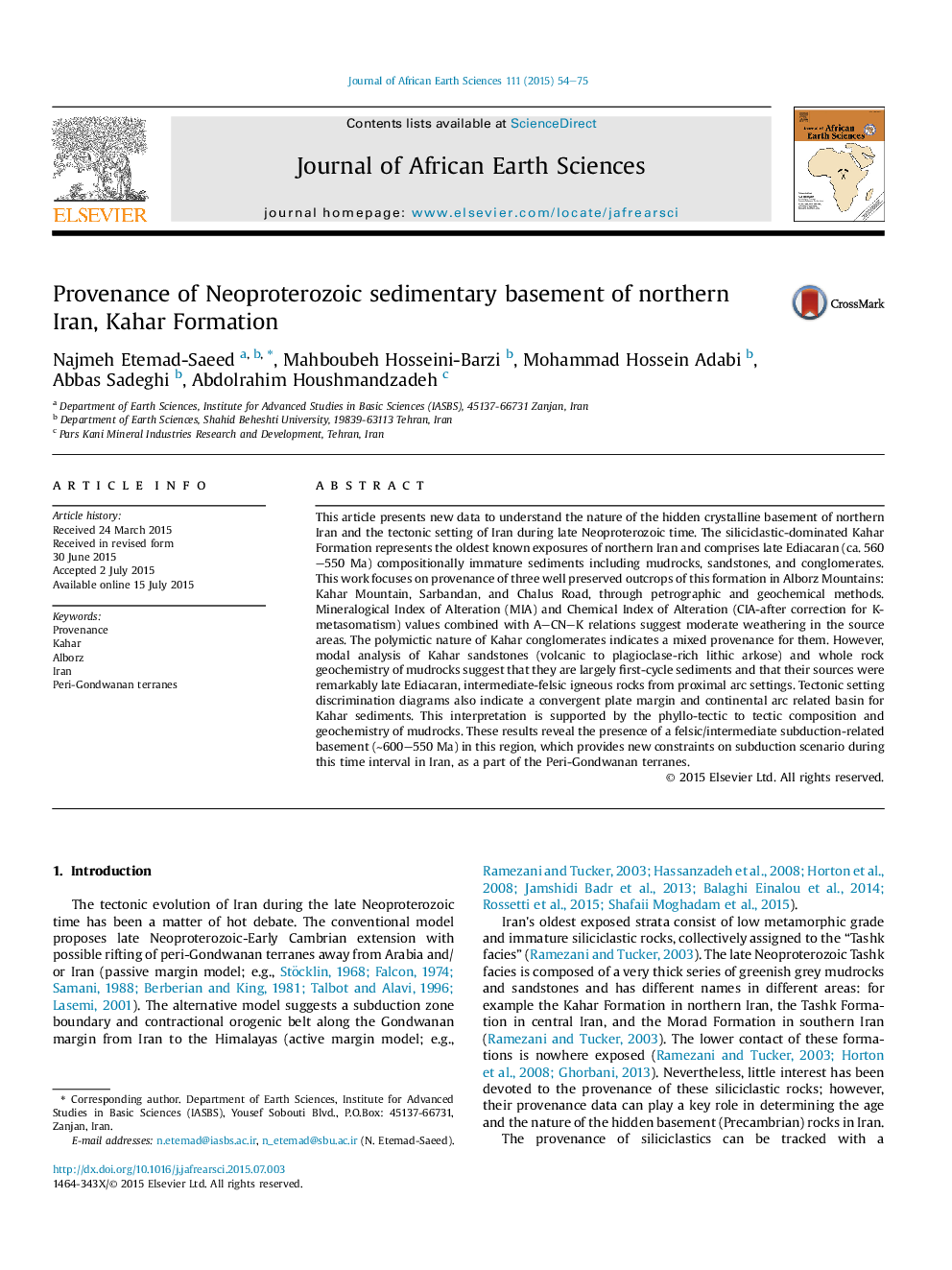| کد مقاله | کد نشریه | سال انتشار | مقاله انگلیسی | نسخه تمام متن |
|---|---|---|---|---|
| 4728484 | 1640196 | 2015 | 22 صفحه PDF | دانلود رایگان |
• Petrographic and geochemical data from sedimentary basement of northern Iran.
• Signs of a hidden crystalline basement (felsic-intermediate) in the sediments.
• Clastics derived from magmatic arcs and deposited in subduction-related basins.
• Peri-Gondwanan affinity of Iran during late Neoproterozoic time.
This article presents new data to understand the nature of the hidden crystalline basement of northern Iran and the tectonic setting of Iran during late Neoproterozoic time. The siliciclastic-dominated Kahar Formation represents the oldest known exposures of northern Iran and comprises late Ediacaran (ca. 560–550 Ma) compositionally immature sediments including mudrocks, sandstones, and conglomerates. This work focuses on provenance of three well preserved outcrops of this formation in Alborz Mountains: Kahar Mountain, Sarbandan, and Chalus Road, through petrographic and geochemical methods. Mineralogical Index of Alteration (MIA) and Chemical Index of Alteration (CIA-after correction for K-metasomatism) values combined with A–CN–K relations suggest moderate weathering in the source areas. The polymictic nature of Kahar conglomerates indicates a mixed provenance for them. However, modal analysis of Kahar sandstones (volcanic to plagioclase-rich lithic arkose) and whole rock geochemistry of mudrocks suggest that they are largely first-cycle sediments and that their sources were remarkably late Ediacaran, intermediate-felsic igneous rocks from proximal arc settings. Tectonic setting discrimination diagrams also indicate a convergent plate margin and continental arc related basin for Kahar sediments. This interpretation is supported by the phyllo-tectic to tectic composition and geochemistry of mudrocks. These results reveal the presence of a felsic/intermediate subduction-related basement (∼600–550 Ma) in this region, which provides new constraints on subduction scenario during this time interval in Iran, as a part of the Peri-Gondwanan terranes.
Figure optionsDownload as PowerPoint slide
Journal: Journal of African Earth Sciences - Volume 111, November 2015, Pages 54–75
